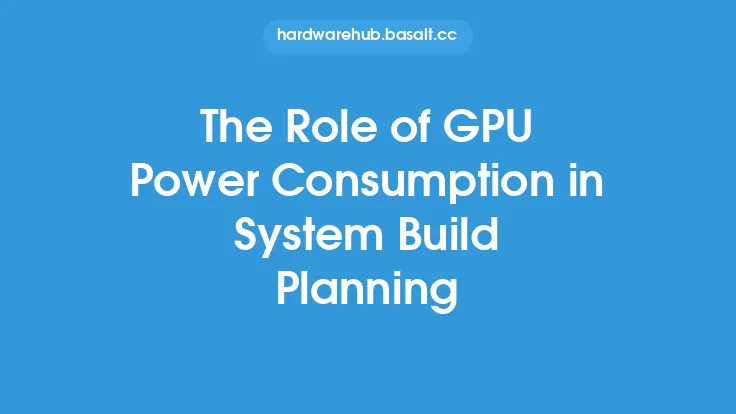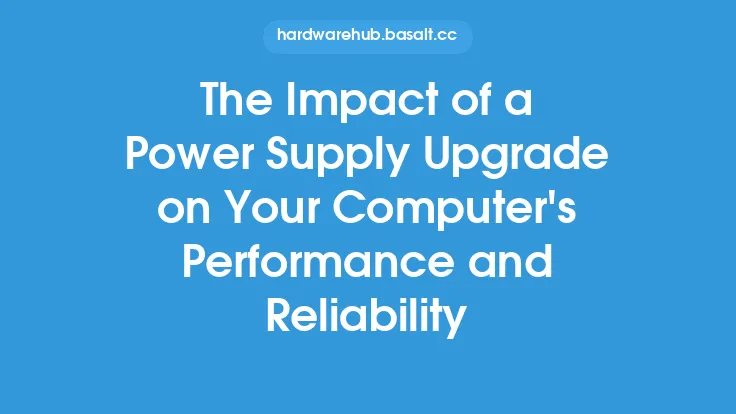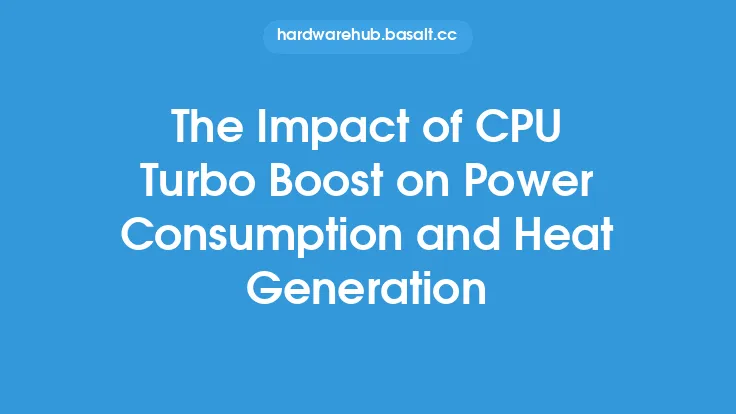The increasing demand for high-performance computing has led to the development of powerful graphics processing units (GPUs) that can handle complex tasks such as gaming, video editing, and artificial intelligence. However, this increased performance comes at a cost, as modern GPUs consume significant amounts of power, which can have a substantial impact on electricity bills. In this article, we will delve into the relationship between GPU power consumption and electricity bills, exploring the factors that influence power consumption, the costs associated with it, and the ways to mitigate these costs.
Introduction to GPU Power Consumption
GPU power consumption is a critical aspect of computer systems, as it directly affects the overall power draw of the system. The power consumption of a GPU is measured in watts (W) and is typically specified by the manufacturer. The power consumption of a GPU can vary greatly, depending on the specific model, with some high-end GPUs consuming up to 350W or more. This high power consumption is due to the complex architecture of modern GPUs, which require significant amounts of power to operate at high speeds.
Factors Influencing GPU Power Consumption
Several factors influence the power consumption of a GPU, including the type of GPU, clock speed, memory, and usage patterns. The type of GPU is a significant factor, as different types of GPUs have varying power consumption levels. For example, integrated GPUs tend to consume less power than dedicated GPUs, while high-end GPUs consume more power than mid-range or budget GPUs. The clock speed of the GPU also plays a crucial role, as higher clock speeds result in increased power consumption. Additionally, the amount of memory on the GPU can impact power consumption, as more memory requires more power to operate.
Calculating the Cost of GPU Power Consumption
To calculate the cost of GPU power consumption, we need to consider the power consumption of the GPU, the cost of electricity, and the usage patterns. The cost of electricity varies depending on the location, with some areas having higher electricity costs than others. In the United States, for example, the average cost of electricity is around 13 cents per kilowatt-hour (kWh). To calculate the cost of GPU power consumption, we can use the following formula: Cost = Power consumption (W) x Usage time (hours) x Cost of electricity ($/kWh). For example, if a GPU consumes 250W and is used for 8 hours a day, with an electricity cost of 13 cents/kWh, the daily cost would be: Cost = 250W x 8 hours x 0.13 $/kWh = 2.6 $/day.
Real-World Examples of GPU Power Consumption Costs
To illustrate the costs associated with GPU power consumption, let's consider a few real-world examples. A high-end GPU like the NVIDIA GeForce RTX 3080 consumes around 320W of power. If this GPU is used for 8 hours a day, with an electricity cost of 13 cents/kWh, the daily cost would be: Cost = 320W x 8 hours x 0.13 $/kWh = 3.3 $/day. Over the course of a year, this would translate to an annual cost of around $1,200. In contrast, a mid-range GPU like the NVIDIA GeForce GTX 1660 consumes around 120W of power. If this GPU is used for 8 hours a day, with an electricity cost of 13 cents/kWh, the daily cost would be: Cost = 120W x 8 hours x 0.13 $/kWh = 1.2 $/day. Over the course of a year, this would translate to an annual cost of around $440.
Mitigating the Costs of GPU Power Consumption
While the costs associated with GPU power consumption can be significant, there are several ways to mitigate these costs. One approach is to use power-efficient GPUs, which consume less power while still providing good performance. Another approach is to optimize usage patterns, such as turning off the system when not in use or using power-saving features like idle states. Additionally, using renewable energy sources like solar or wind power can help reduce the carbon footprint and costs associated with GPU power consumption. Finally, considering the total cost of ownership, including the cost of the GPU, power consumption, and maintenance, can help make informed decisions when selecting a GPU.
Conclusion
In conclusion, the power consumption of GPUs can have a significant impact on electricity bills, with high-end GPUs consuming substantial amounts of power. Understanding the factors that influence power consumption, calculating the costs associated with it, and considering real-world examples can help illustrate the importance of power efficiency. By mitigating the costs of GPU power consumption through the use of power-efficient GPUs, optimized usage patterns, and renewable energy sources, we can reduce the financial and environmental impact of high-performance computing. As the demand for powerful GPUs continues to grow, it is essential to consider the power consumption and associated costs to make informed decisions and promote sustainable computing practices.





